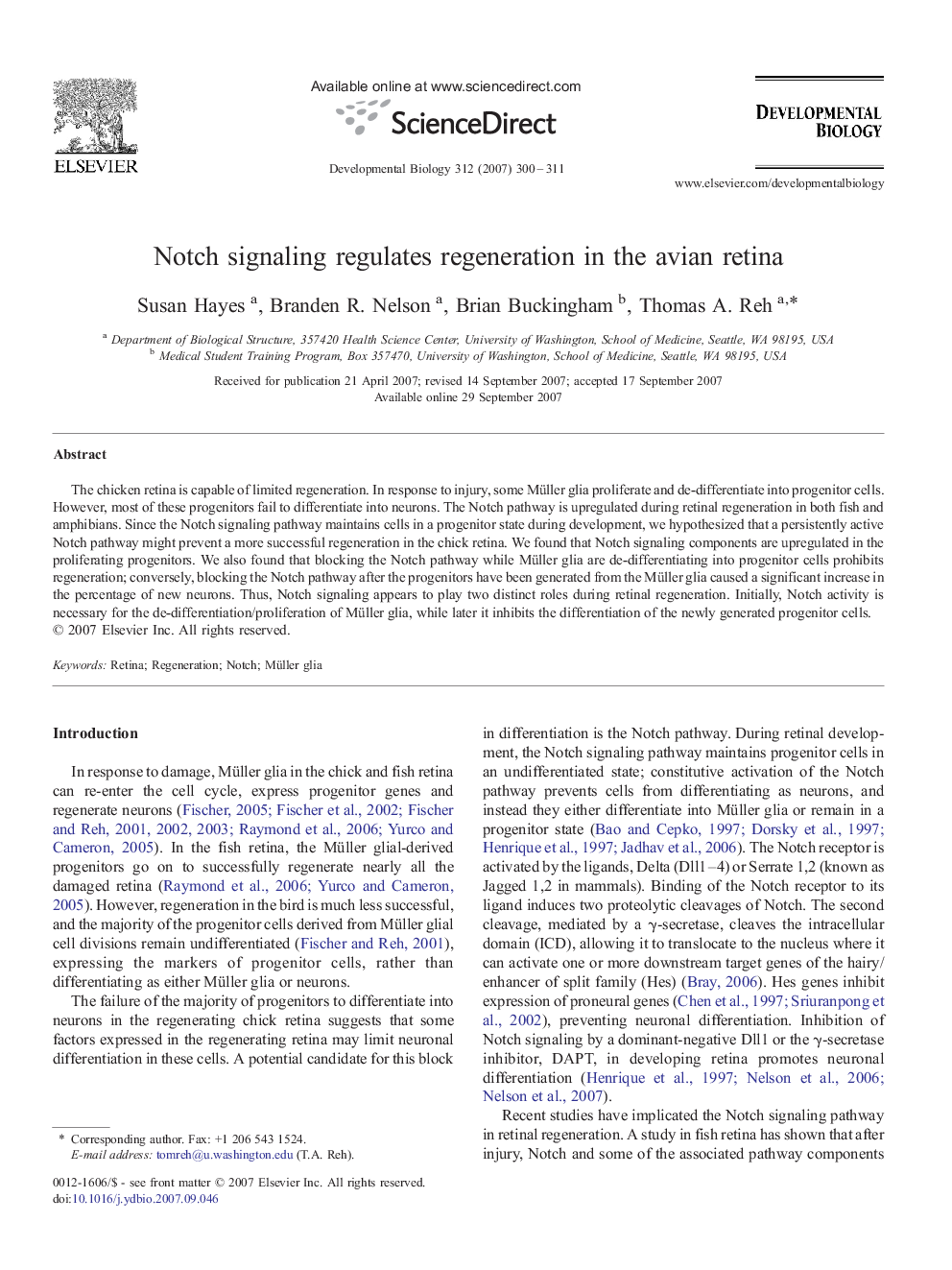| Article ID | Journal | Published Year | Pages | File Type |
|---|---|---|---|---|
| 2174769 | Developmental Biology | 2007 | 12 Pages |
The chicken retina is capable of limited regeneration. In response to injury, some Müller glia proliferate and de-differentiate into progenitor cells. However, most of these progenitors fail to differentiate into neurons. The Notch pathway is upregulated during retinal regeneration in both fish and amphibians. Since the Notch signaling pathway maintains cells in a progenitor state during development, we hypothesized that a persistently active Notch pathway might prevent a more successful regeneration in the chick retina. We found that Notch signaling components are upregulated in the proliferating progenitors. We also found that blocking the Notch pathway while Müller glia are de-differentiating into progenitor cells prohibits regeneration; conversely, blocking the Notch pathway after the progenitors have been generated from the Müller glia caused a significant increase in the percentage of new neurons. Thus, Notch signaling appears to play two distinct roles during retinal regeneration. Initially, Notch activity is necessary for the de-differentiation/proliferation of Müller glia, while later it inhibits the differentiation of the newly generated progenitor cells.
